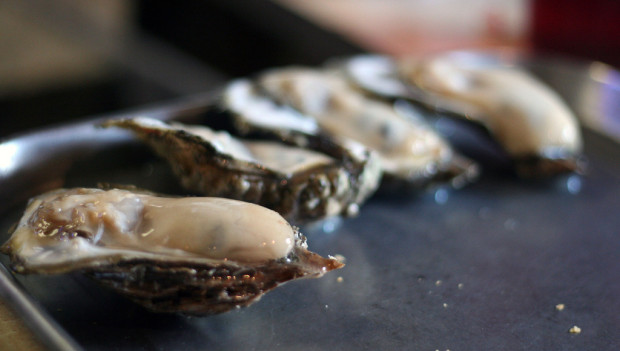We have much more to do and your continued support is needed now more than ever.
The Toll on Gulf Oysters
It is small and slimy, and goes down easy with a little lemon.

Oysters live in estuaries—places formed where freshwater from our rivers and streams meet the saltier waters of the Gulf. And while oysters are considered seafood, they actually require this balance of fresh and salt water to survive.
Approximately 85% of oyster reefs have been lost across the globe. And while we don’t have exact estimates, it is clear that the Gulf is no exception to the global trend. For example, in Mobile Bay, maybe upwards of 80% of oyster reefs have been lost.
Gulf Oyster Numbers on the Decline
Despite this decades-long decline, the Gulf Coast still produces two-thirds of the nation’s oysters. But in the years since the Gulf oil disaster, state figures show that Louisiana’s oyster catch is down by almost a third. Some fishermen have argued that this decline is an ongoing impact of the oil disaster.
“It’s 98 percent off this year. That’s the lowest I’ve ever seen it,” said George Barisich, president of the United Commercial Fisherman’s Association. “It’s like a Teflon coating on my reef. My reefs are 60 years old and I have no spat catch at all.”
An ongoing environmental study—conducted as part of the Natural Resources Damage Assessment resulting from the Gulf oil disaster—indicates that scientists may soon be able to confirm this oysterman’s hunch:
Oyster eggs, sperm, and larvae were also exposed to oil and dispersants through direct contact with water. PAHs are toxic to oyster gametes, embryos, larvae, juveniles and adults and result in lethal and sub-lethal effects (e.g., impaired reproductive success). Intertidal adult oysters were also exposed to oil droplets and oil on suspended sediment and detritus.
Fall 2010 sample results suggest oyster larvae were rare or absent in many of the samples collected across the northern Gulf of Mexico. Oyster spat recruitment was also extremely low or zero in 2010 over large areas of subtidal oyster habitat along the northern Gulf coast. There was also low spat recruitment through the spring and fall of 2011 and the fall of 2012. Trustees are continuing to evaluate effects of 2010 oiling and associated response activities on Gulf oyster populations.
The response efforts are also part of the picture, at least in Louisiana. During the height of the spill, the state released large amounts of freshwater from the Mississippi River into its delta in attempt to keep oil away from the Louisiana’s shoreline. The volume and duration of the freshwater from these response actions affected oysters over a broad area.
Restoration projects recently announced by the National Fish & Wildlife Foundation include oyster reef restoration in Texas, Alabama, and Florida. More projects like these will be necessary to reverse the downward trend for oysters across the Gulf of Mexico and to restore the health and productivity of the entire Gulf ecosystem.
[youtube]http://www.youtube.com/watch?v=g8yZI7U_Uew[/youtube]
Help oysters and other Gulf wildlife
![]() Make sure that the fines from the BP oil spill are dedicated to projects such as restoring oyster reefs and other projects that will help Gulf wildlife!
Make sure that the fines from the BP oil spill are dedicated to projects such as restoring oyster reefs and other projects that will help Gulf wildlife!






















